
spine
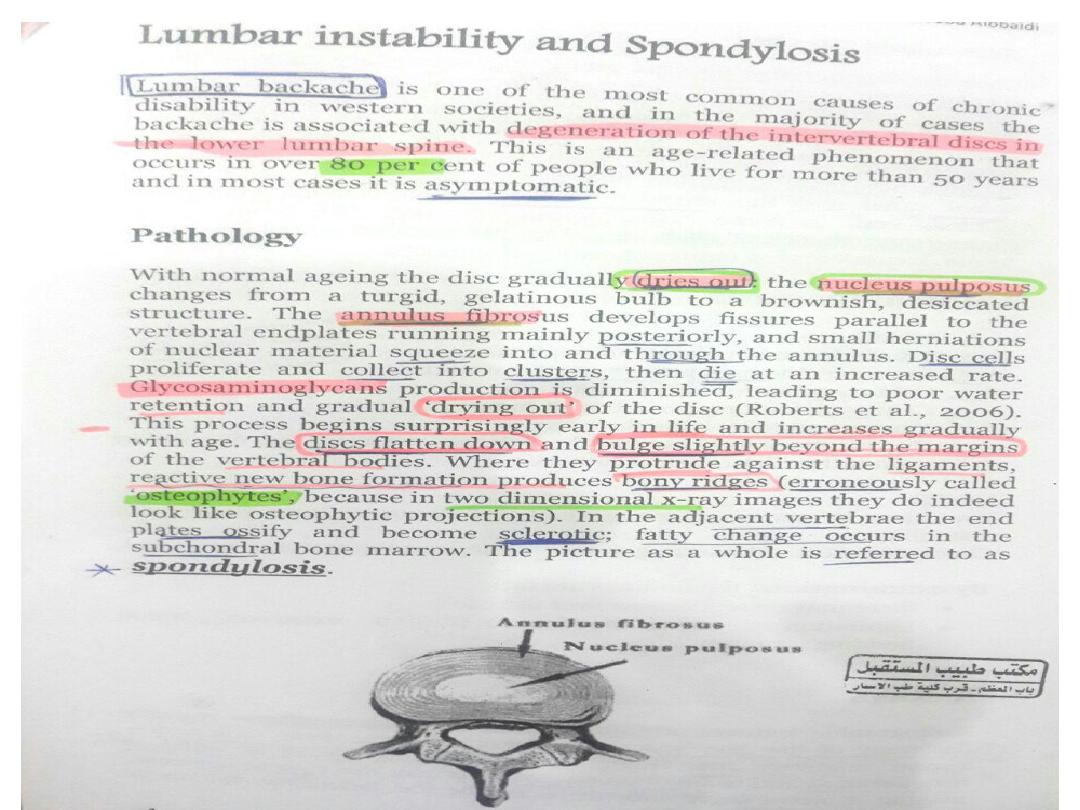
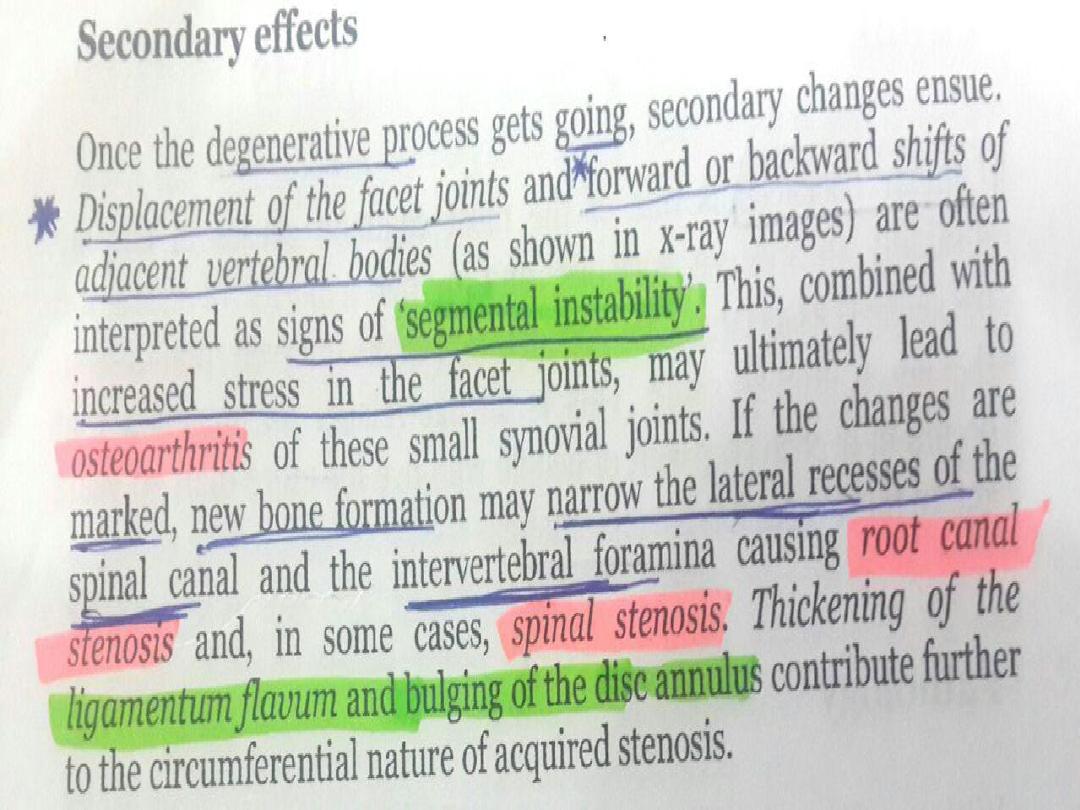
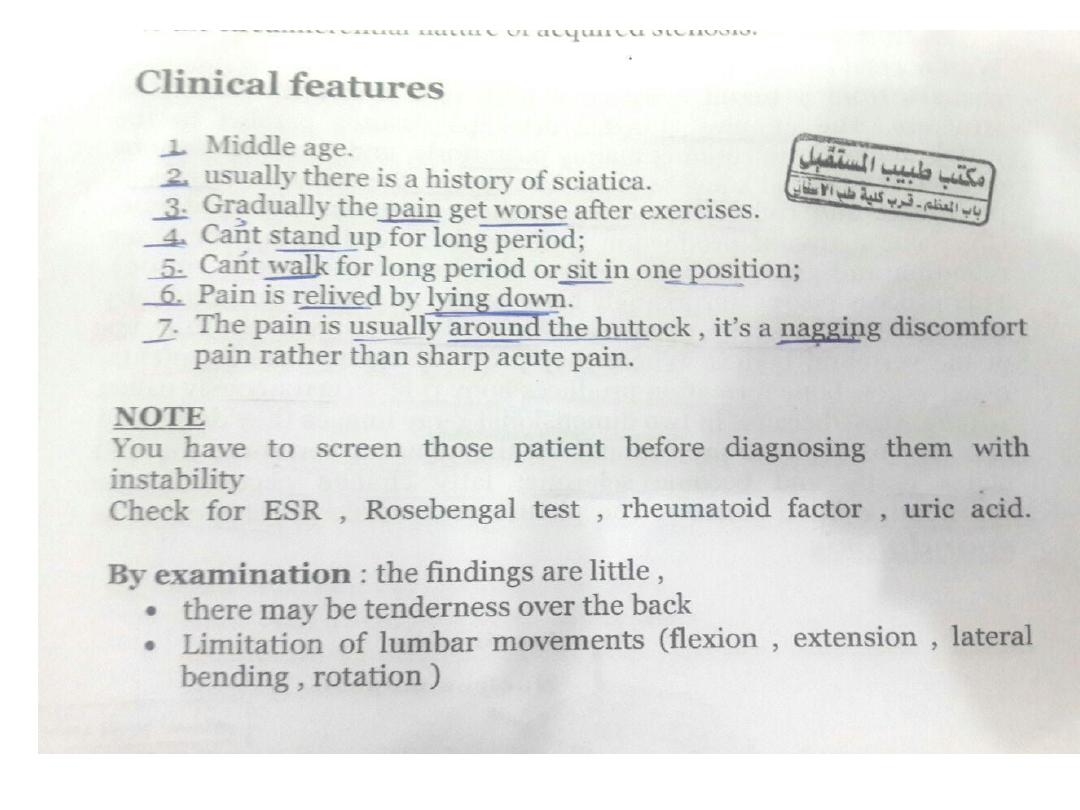
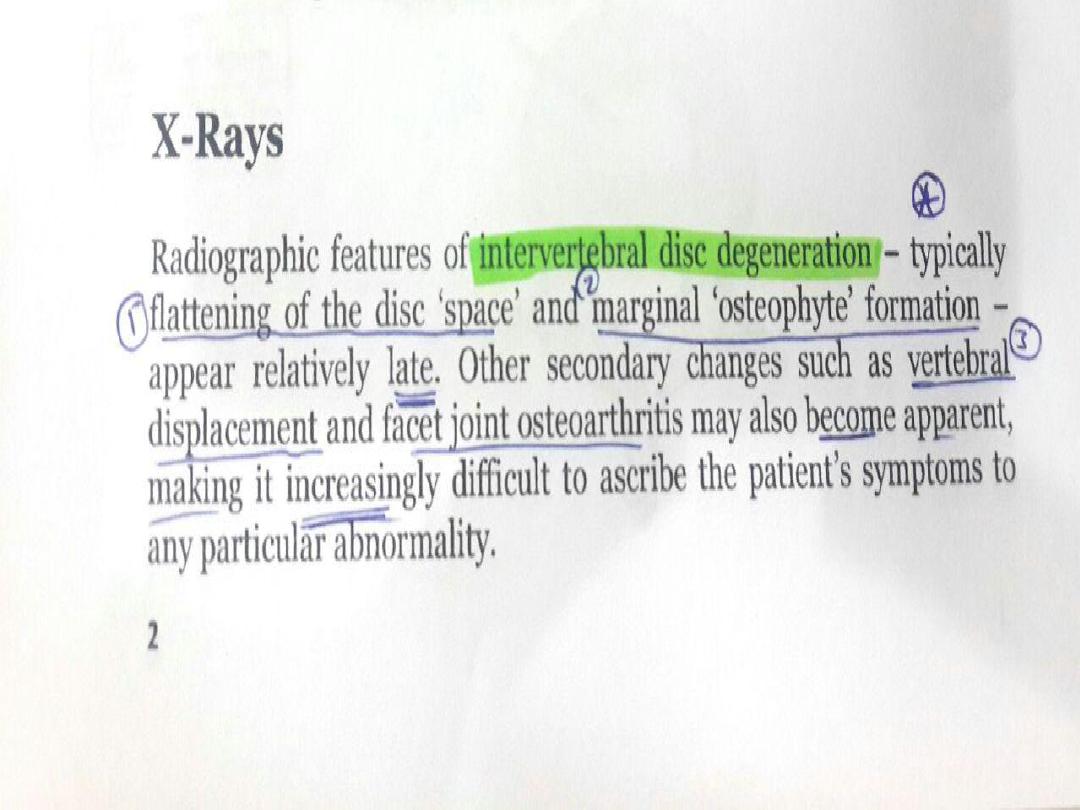
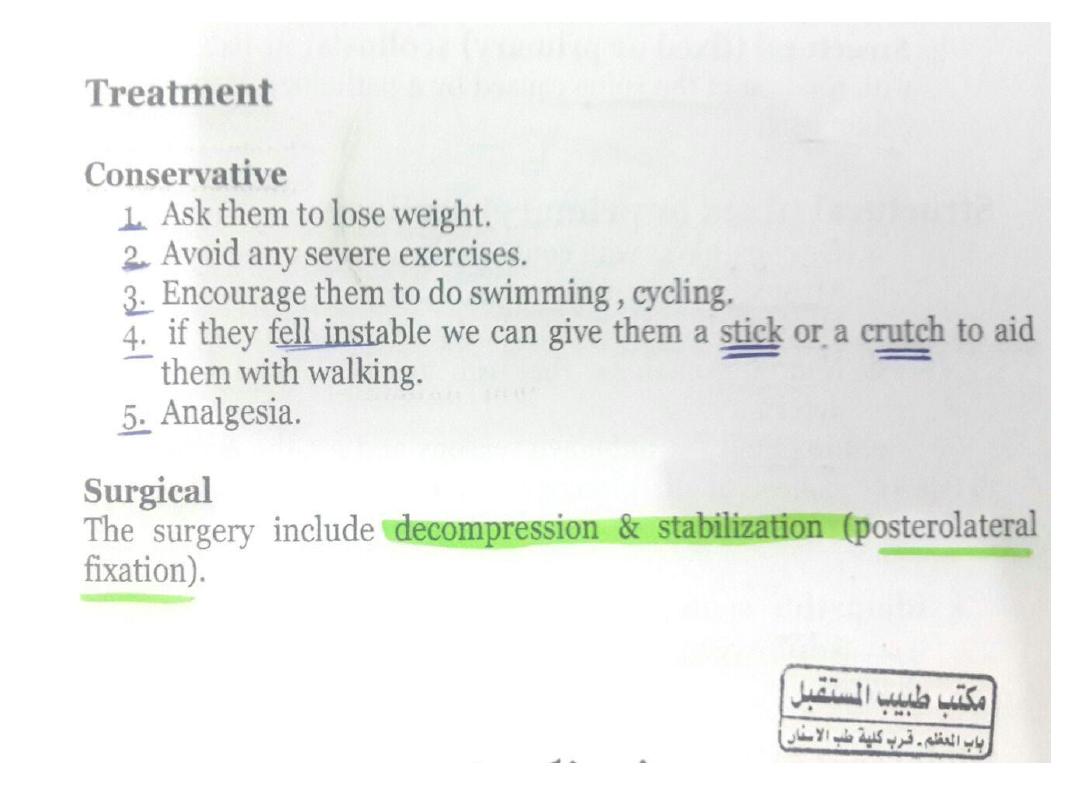

Diseases of the spine
Scoliosis
Seen from behind, the normal back is
straight, in scoliosis there is lateral
deviation of the spine and the back is
curved to the side.
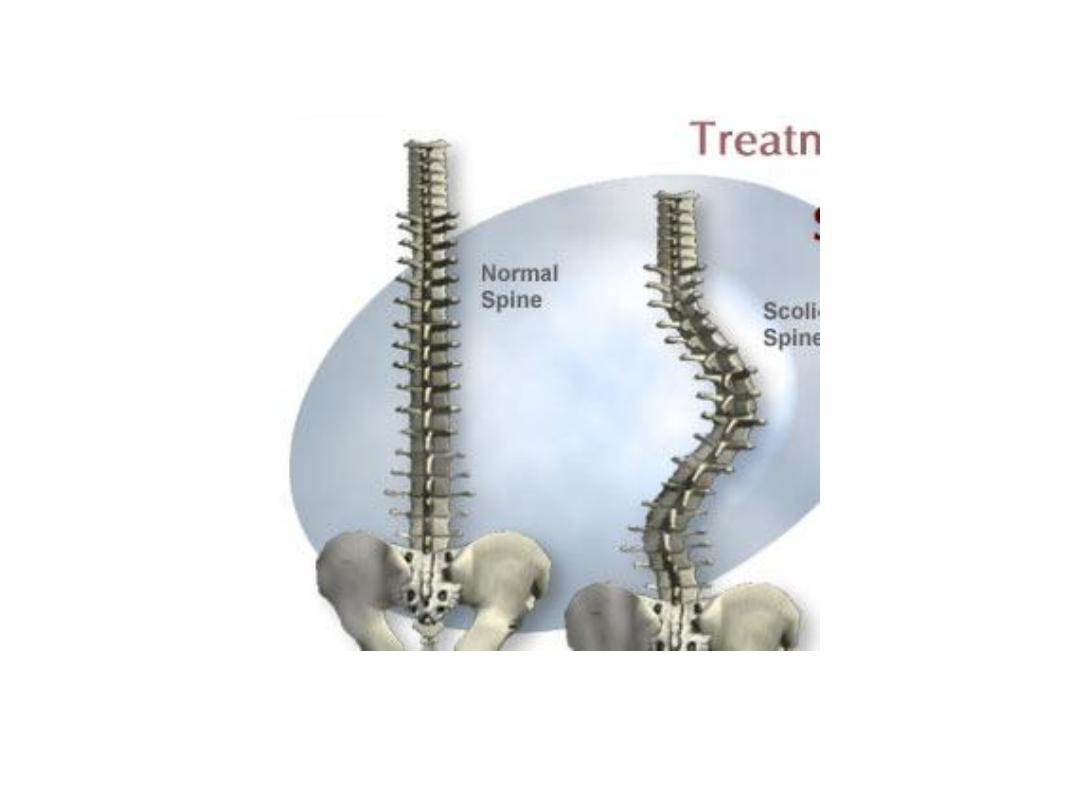

Scoliosis can be;
1.
Postural scoliosis: which is secondary
type occur as a compensation to other
extra spinal problems as short limb,
pelvic tilt or as a result of muscle spasm.
2.
Structural (fixed or primary) scoliosis: its
fixed deformity with rotation of the spine
caused by a pathology of the vertebral
Colum itself .

Structural (fixed or primary)
scoliosis:
a. Osteopathic as with congenital anomaly of the spine.
b. Myopathic as in muscle dystrophy.
c. Neuropathic as with cerebral palsy or polio.
d. Neurofibromatosis that can be associated with severe
deformity.
e. Idiopathic for unknown reasons and it’s the
commonest of all types of scoliosis at all, it
accounts for more than 90% of all scoliosis.

Idiopathic scoliosis can be
infantile, juvenile or
adolescent type. Adolescent
idiopathic scoliosis is the
commonest of all types.

Adolescent idiopathic scoliosis:
Usually presents before puberty and
progresses until skeletal growth ceases;
thereafter further deterioration is slight. The
cause is unknown but its primarily related to
changes in the spine that make it unstable.

Pathology
• The curvature may occur anywhere in the
thoracic or lumbar spine. The vertebrae that
make up the curve are always rotated
around the vertical axis; the ribs on the
convex side are also carried around
posteriorly and stand out as a prominent
hump.

Clinical features:
• Patients usually present between the ages of
10 and 15. Deformity is the only symptom
and the severity depends largely’ on which
part of the spine is involved.
• Whatever the deformity, it always looks
worse on flexion.


X-RAY:
• This should include full-length views of
the spine. The angle of curvature (Cobb’s
angle) is measured by passing lines on the
upper and lower borders of the curve.

Treatment:
• The aim is to prevent the curve becoming severe.
• The younger the child and the higher the curve
the worse the prognosis.
• A period of preliminary observation may be
needed before deciding between conservative and
operative treatment.

Exercises alone have no effect on
the curve.

Orthosis (splints or braces) are
used for all progressive curves of
20-40 degrees.
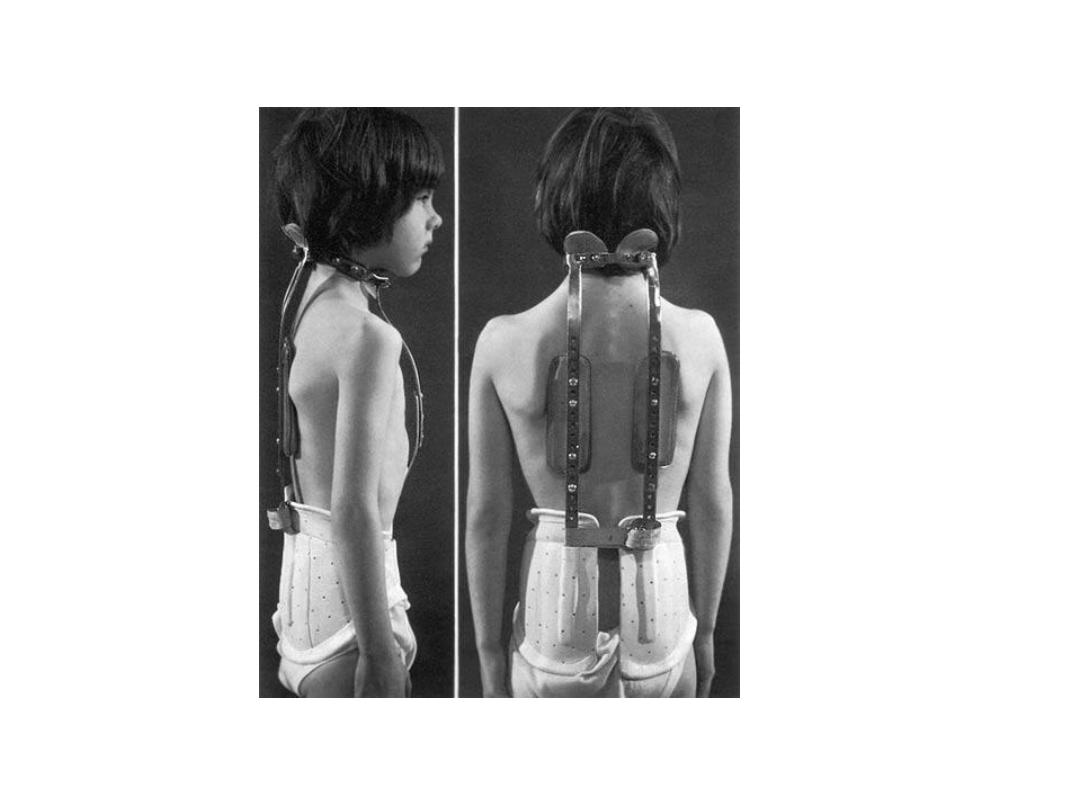

Operation is indicated for curves
of more than 40 degree. The
vertebrae are exposed, and the
curve is corrected, as far as
possible, by spinal
instrumentation and the spinal
fusion with bone graft is done.
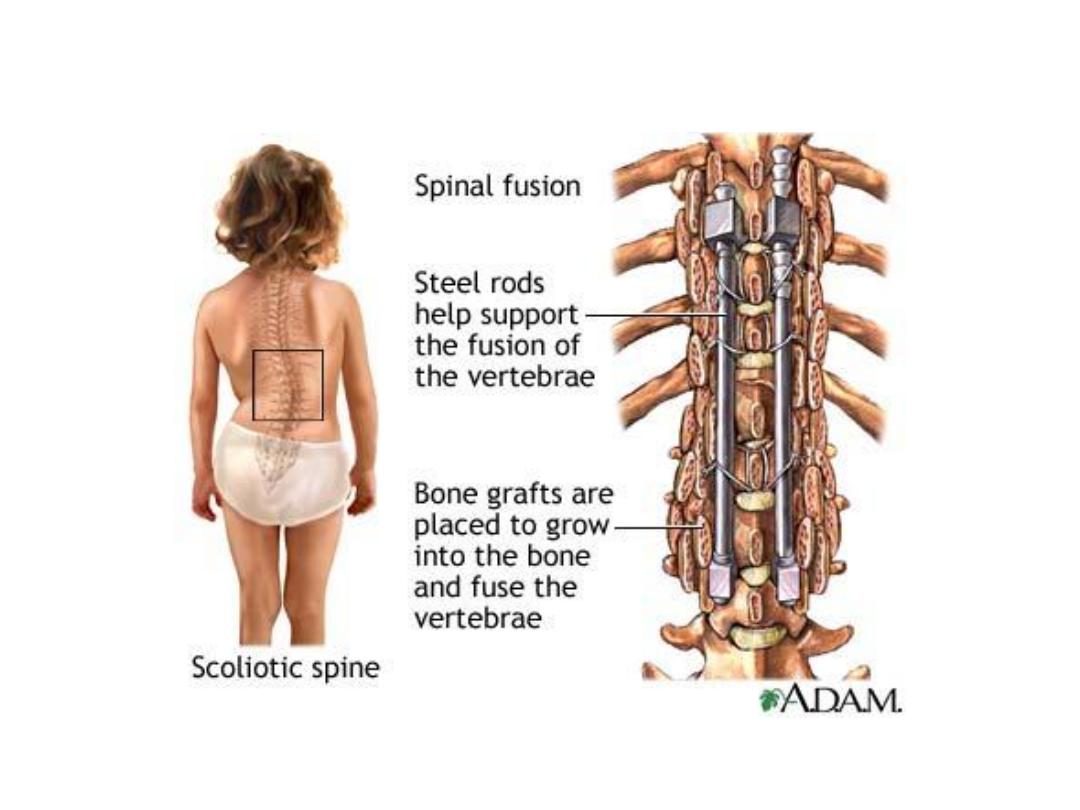

Physiotherapy used with all
types of treatment.
